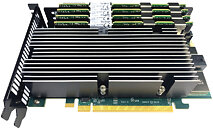
Lenovo Announces New AI Powered Legion Gaming Laptops and New Ultra-Wide Gaming Monitors
Today, Lenovo announced the latest 8th generation of Lenovo Legion Slim laptops, allowing gamers to harness the freedom that the newest series has to offer. The Lenovo Legion Slim series is all about empowering players to crush their gaming goals while also pursuing their creative passions, and there are more options than ever among the new Lenovo Legion Slim 7i and 7 (16", 8), Lenovo Legion Slim 5i and 5 (16", 8), and—an all-new size for this year—the Lenovo Legion Slim 5 (14", 8), which elevates laptop power and portability to a whole new level. This newest generation of the series is also the first to sport the Lenovo Artificial Intelligence (LA) family of chips. These are onboard physical AI chips that power Lenovo AI Engine+, which dynamically adjusts the Lenovo Legion ColdFront 5.0 thermals to optimize cooling on the fly and maintain maximum output with minimal noise.
Lenovo Legion Slim series laptops are designed to meet the multi-faceted needs of gamers, with an SD slot, rapid charging battery technology Windows 11, three months of free Xbox Game Pass Ultimate, as well as access to Nahimic by SteelSeries 3D immersive audio, and Lenovo Vantage helping users get the most out of their machines. Offering peace of mind, Lenovo's Legion Ultimate Support service is available with round-the-clock tech support, guidance and assistance so gamers don't have to miss a beat, and with Legion Arena, users can create their ultimate gaming hub with all their titles accessible in one place rather than having to switch between apps. Additionally, gamers looking to expand their horizons—literally—can look forward to the new Lenovo Legion R45w-30 44.5" 32:9 ultrawide curved display and the new Lenovo Legion Y34wz-30 Gaming Monitor that delivers extreme clarity and vivid color with its 34-inch mini-LED backlit panel.
Lenovo Legion Slim series laptops are designed to meet the multi-faceted needs of gamers, with an SD slot, rapid charging battery technology Windows 11, three months of free Xbox Game Pass Ultimate, as well as access to Nahimic by SteelSeries 3D immersive audio, and Lenovo Vantage helping users get the most out of their machines. Offering peace of mind, Lenovo's Legion Ultimate Support service is available with round-the-clock tech support, guidance and assistance so gamers don't have to miss a beat, and with Legion Arena, users can create their ultimate gaming hub with all their titles accessible in one place rather than having to switch between apps. Additionally, gamers looking to expand their horizons—literally—can look forward to the new Lenovo Legion R45w-30 44.5" 32:9 ultrawide curved display and the new Lenovo Legion Y34wz-30 Gaming Monitor that delivers extreme clarity and vivid color with its 34-inch mini-LED backlit panel.



















































